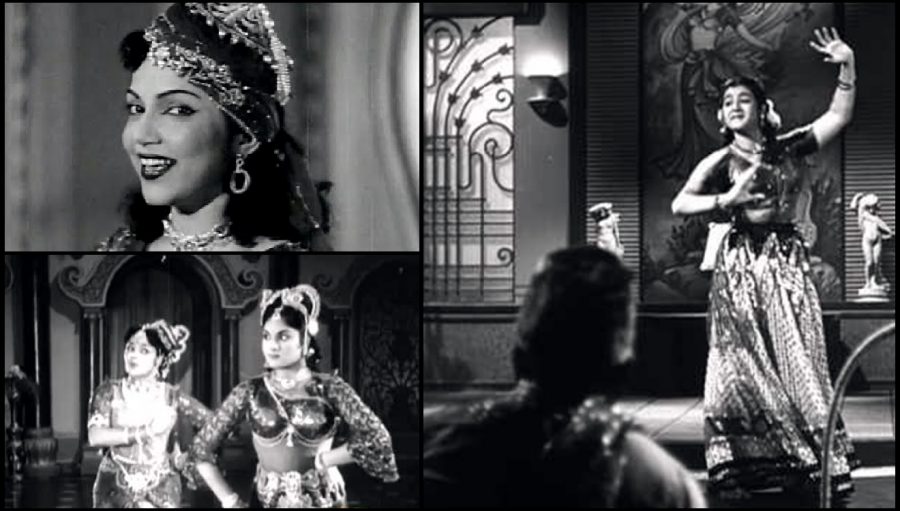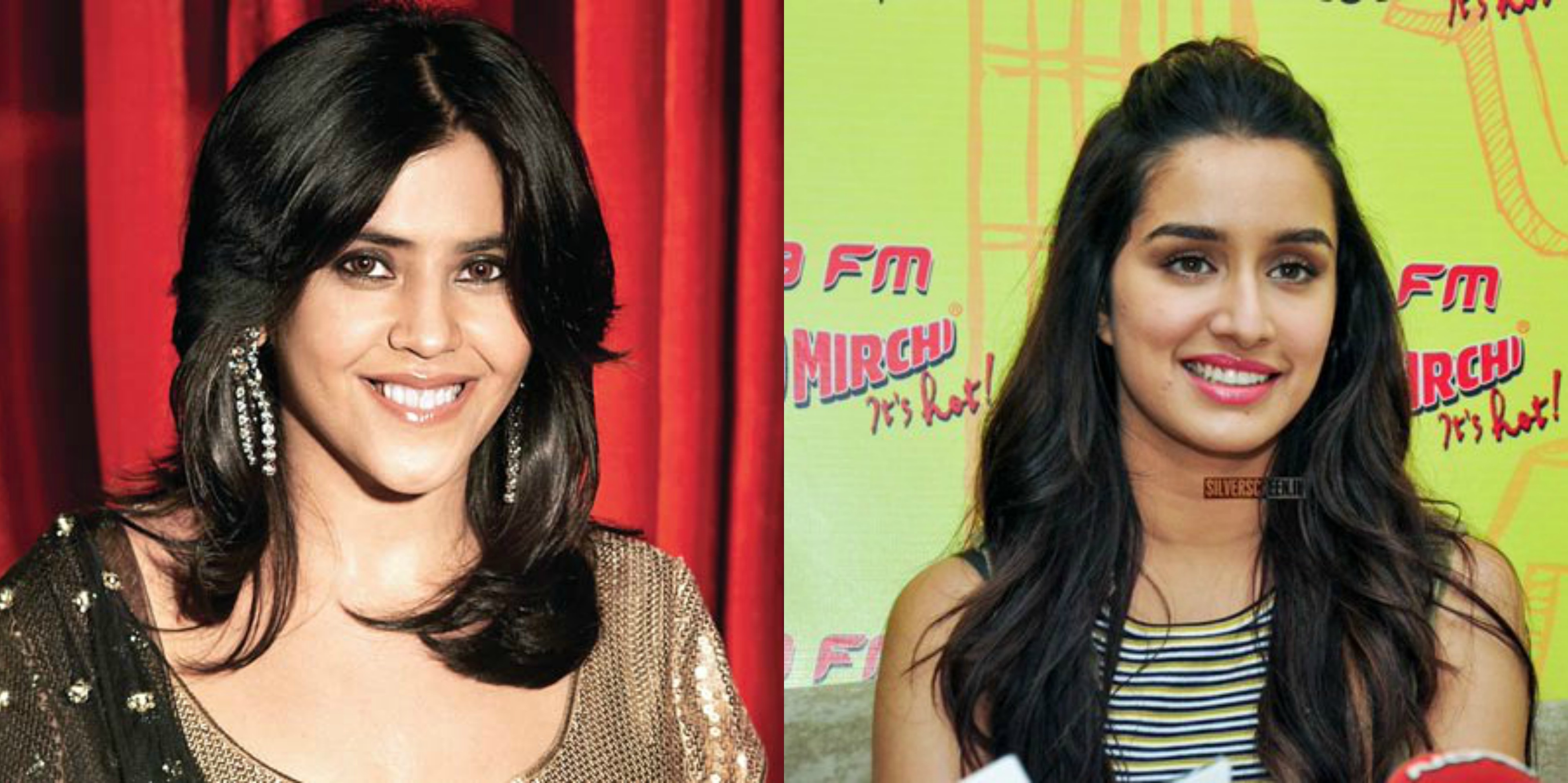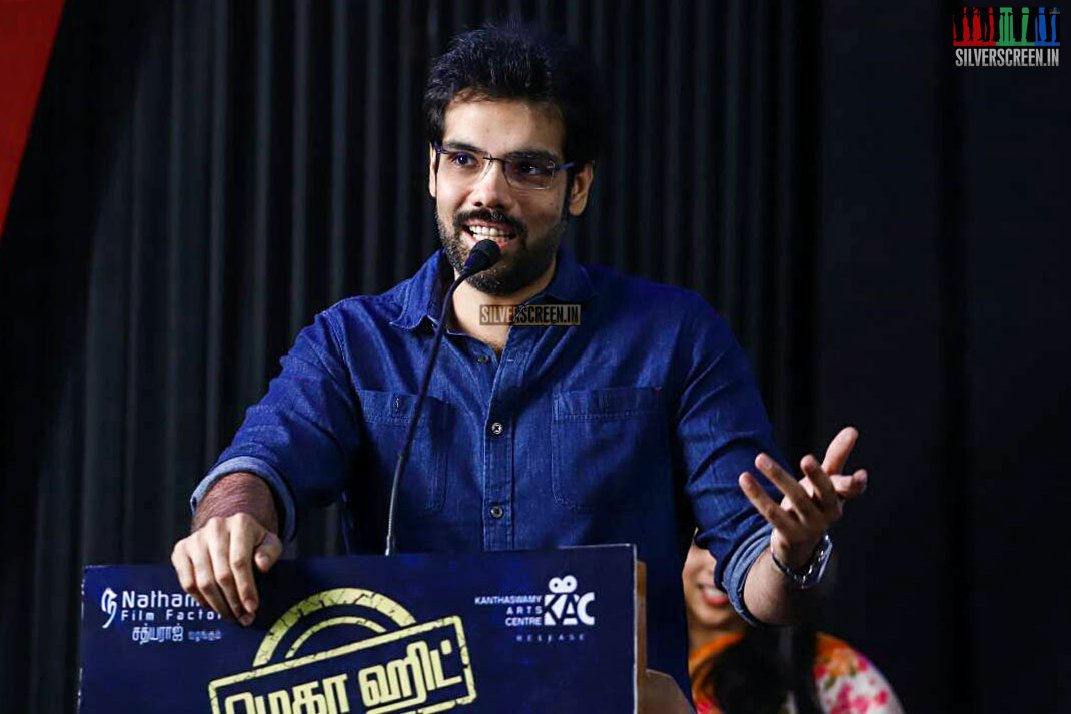There was a time when dance performances featuring a woman dancer were pleasing on the eye, and to the ear. They were subtly sensual; no racy imagery, no bawdy lyrics, and a camera that treated its subject with loving respect. The special song, as it exists today – with the sole aim to titillate – is a recent phenomenon
An excruciatingly long ‘comedy’ sequence in Vanakkam Thalaivaa (2005) involves Vivek asking a broker for ‘models’ to ‘spend time with’. This culminates in a dance number on a movie set made to look like a busy bazaar. Sathyaraj, accompanied by barely-clad models, dances to ‘Sutta Pazham Venuma Sudatha Pazham Venuma‘. The cinematographer’s brief seems to be clear: capture the midriff of the models involved. It’s certainly not the most distasteful song out there; but, it definitely makes an impression.
Virudhagirinathan, a psychiatrist, says that such images reinforce the masculinity of the male lead. “Conversely, in Indian films at least, such songs are used as a sort of subtle indication that the man is sexually active. The song indicates the blossoming of romance, and the attraction between the hero and the heroine. You rarely get one without the other. The man has to be sexually active. And then, he can fall in love.”
This blatant objectification of the female physique is an indication of the times we live in. We have directors who think it’s normal to dictate the length of their actresses’ hemlines. We have directors who believe that ‘item’ songs are necessary to pull in the audience [A derogatory term in itself that reduces women to objects]. We have directors who think ‘sex sells’ and who try to get the right people to sell it. The camera intrudes into an actress’s personal space in ways that could qualify as sexual harassment in real life. But, as long as it’s in the movies, everybody’s okay.
The plight of the dancers then, becomes pathetic. Their job requires them to wear the kind of outfits they’d probably not choose to wear otherwise. And, execute moves that they’d rather not be a part of.
But, that’s just assuming that all dancers hate what they do. And, in a society that derides them for their profession and enjoys their dance on screen, it’s probably a safe mask to wear for some. Films like Anarkali of Aarrah – a lovely, haunting portrait of a village dancer, uninhibited in her expression of sexuality in rural Bihar, and also someone who tries to uphold her dignity by confronting a powerful man – are rare to come by.
Actress Suja Varunee says that such songs are slowly gaining their actresses some semblance of dignity, thanks to the large number of heroines opting for it. “But earlier, actresses like Alphonsa, Mumtaz and even Jyothi Lakshmi were portrayed as symbols of wrong behaviour for being a part of such numbers. Even now, there is a sort of stigma attached to it.” Suja later adds, “While item dancers are held in a somewhat different status than heroines, it’s still a dignified job. The pay is good and with the right mind, one can go places.”
The ‘right mind’, she elaborates, includes a willingness to ‘go with the flow’ and not worry too much about how one is portrayed on screen. “Sometimes, the camera angles are terrible. But in a majority of these songs, I’ve not had that issue. When I look back on my work, I feel immense pride.”
*****
“It’s a skewed world,” Jayamalini, a popular actor-dancer from the 80s, tells Silverscreen.
Along with her sister – the late Jyothi Lakshmi – Jayamalini was known for her risque dance appearances in films. Much of the outfits they wore for the films made them uncomfortable. “It gave us bread and butter, and so we chose that life,” Jayamalini says, “But there was a lot of joy to be had while dancing as well. There’s a freedom of expression and a liberation that is not there for the film’s heroine.”
Earlier – during the early 50s and 60s – these song and dance numbers designed to serve as welcome relief from the proceedings in the film. The conservatism that ruled over Tamil studios meant that such songs were also made to follow rigid rules and strictures. This maintained the dignity of the artistes performing for the camera and also gave the songs that old-world charm that is missing from films today.
Lalitha, Ragini, Padmini – collectively known as the Travancore Sisters – and actor Vyajayanthimala were proponents of such dance numbers. Their classical dance background was also made use of.
The outfits they wore were probably risque for the times they were made in, but the lyrics, the approach to the song and the dancer’s movements were all respectful of the feminine form. Nothing was crass or vulgar. Like ‘Rasikkum Seemane’ from Parasakthi, in which a young woman performs for an intimate gathering. The movements are a mix of classical and contemporary, with the overall focus on the graceful choreography, and not on the physical attributes of the dancer.
A very young Waheeda Rehman says ‘Salaam Babu’ in a special appearance in Alibabavum 40 Thirudargalum. The song is meant to provide some relief from the otherwise thrilling film, and does just that, without resorting to sexual gimmicks. This is essentially a pub song; Waheeda dances in front of a group of men consuming liquor. The lyrics go – ‘thanga kaiyinale kaasu alli veesunga’ [beseeching the audience to be generous with their money] – and yet, there’s nothing suggestive about Rehman’s attire, or dance movements.
Madhurakasi’s lyrics skirt over the setting of the song, alluding to the dancer’s profession and yet, shying away from making it obvious.
Maasilla azhagale aanandham moottiye,
Vaanavillil kaanadha varnajaalam kaattiye
The modern version of the pub song would not shy away from stating the obvious. And that’s what makes such old numbers all the more iconic.
Maama Maama Maama may be misconstrued now – it has faint sexual undertones. The man in the song wants to express his love for his girlfriend in a more physical way. The woman though, does not find the idea appealing.
For Maalayitta Mangai’s (1958) ‘Senthamizh Thenmozhiyal‘, Kannadasan writes about a woman whose Tamil sounds like honey and whose laughter reminds him of the moon. There are metaphors aplenty in this song. At a point, Kannadasan wonders if the woman in question used the blue of her eyes to dye the ocean. He writes that the beauty she possesses makes other women envious.
Meanwhile, the lady in question minces about on screen as backup dancers give her company.
Kangalil neelam vilaithavalo,
Adhai kadalil kondu karaithavalo
Pennukke pennai perasai kollum,
Perazhagellam padaithavalo
The overall setting is romantic, a little mystical even – an example of a special song that does not need extra gimmicks to pull in the audience.
‘Unnai Kan Theduthey’ was slightly risque for its times, in that it featured a tipsy heroine. That was the whole point of the song – the novelty factor, if you will. A bold move on the part of the filmmaker who chose to show a woman drink at a time when even speaking about such an act was considered heresy. The idea propagated by the filmmaker is tinged with scandal, and the overall intention is to titillate the audience with this fact. But, that’s fine, it’s good even. There are hiccups and a lot of drunken dancing and that’s it. Gemini Ganesan is a spectator to the mess unfolding in front of him. He barely participates, and then, the song ends.
The song features Lalitha as the vamp in love with young Ganesan. She confesses her love for him under the influence of alcohol. He is using her to get to something. Tamil cinema mores dictate that the woman should be wrong. And so, that is the party line. But, for a brief moment, you can’t help but cheer for Lalitha as she goes after what she wants.
Perhaps the most famous example of a special song is ‘Kannum Kannum Kalandhu’ from Vanjikottai Valiban (1958). Featuring two exceptional dancers – Vyjayanthimala and Padmini – the song is more a celebration of these women and their in-form dancing skills than anything else. They compete for the attention of Gemini Ganesan and with each step, up the ante, only for the other to match it. The tempo rises, as does the competition. An energetic number that serves as a showcase for how special songs should be done, this one is wildly popular even today.
Both Padmini and Vyajayanthimala wear fitted costumes. The actors are in prime physical condition and feed off each other’s energy. From a spirited fight for Gemini Ganesan, the song is elevated to a battle between two supremely talented dancers who both want to win.
Hiralal, grandfather of current Bollywood favourite Vaibhavi Merchant, choreographed this song sequence.
Kannum Kannum Kalandhu, Sondham Kondaadudhe
Ennum Podhe Ullam Pandhaadudhe
Kanni Endrenadi Kaigalai Pidithaar
Kaadhali Endrennai Konjiye Azhaithaar
The lyrics by Kothamangalam Subbu evolve from a light and breezy romantic number to a spirited fight between rivals. At first, Padmini begins her dance performance by singing about a man who wanted to make her his lover. Then, enraged by the wordless attraction between Padmini and Gemini Ganesan, Vyajayanthimala enters the fray. But, not without a quick stop at the vanity room.
As she enters the dancing arena, PS Veerappa utters those iconic lines – ‘Sabash, Seriyana Potti!’, that ring all the more true even now.
Bhanumathi plays the dancer Marziana in this song from Alibabavum 40 Thirudargalum – a woman who has high morals despite her derided profession. The lyrics (by Maruthakasi) are perhaps best suited for the audience of today.
Angonnu Ilikkudhu, Aandhai Pol Mulikkudhu
Aattathe Rasikkavillai, Aalai Thaan Rasikkudhu
[He watches my body, not my dance]
*****



